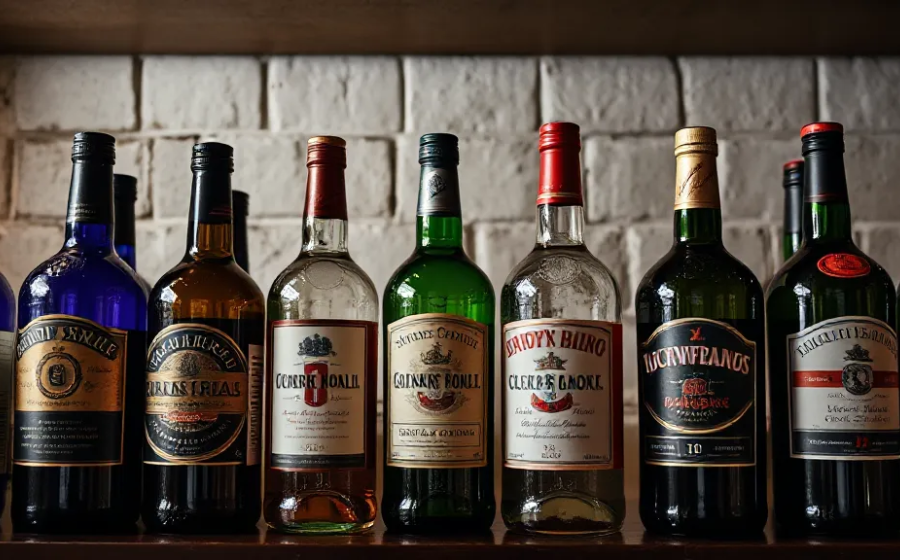
From Clay Pots to Cans
When you pop open a cold beer or uncork a bottle of wine, you’re not just tasting the alcohol, you’re sipping from centuries of packaging evolution. Alcohol, perhaps more than any other product, has mirrored human history not just in its recipes but in the vessels we’ve used to contain it. From ancient amphorae to modern sustainable cartons, the packaging of alcohol tells a fascinating story of culture, commerce, and creativity.
Clay, Casks, and Civilization (7000 BCE – 500 CE)
Alcohol packaging began with clay. Archaeological evidence from Jiahu, China, shows that as early as 7000 BCE, fermented beverages were stored in earthenware jars sealed with tree resin. In Mesopotamia, the Sumerians used clay vessels with reed stoppers to store beer, while the Egyptians filled amphorae with wine, often painting or etching them to indicate the origin and year.
By the time the Romans came around, amphorae had become a staple of the wine trade. These long-necked clay vessels were designed to be stacked in ships’ holds, their pointed bases wedged into sand or racks. Romans even stamped them with branding, the early ancestors of wine labels.
Barrels and Bottles: The Medieval Shift (500–1600 CE)
The Middle Ages ushered in the wooden barrel, thanks to the Celts and later the Gauls, who mastered cooperage (the craft of barrel-making). These barrels were more durable and mobile than fragile amphorae and could be rolled instead of carried. While still porous, barrels were ideal for aging, especially for wine and beer.
Glass bottles didn’t become common until the 17th century. Though glassmaking was known in ancient times, it wasn’t until improvements in furnace technology and the invention of coal-fired kilns in England that durable glass bottles could be mass-produced. Wine merchants began using them for retail, but with one major catch: they didn’t seal well.
The Cork Revolution (1600s–1800s)
Enter cork. Portuguese cork forests provided a sustainable and compressible material that, when paired with the right bottle, could keep wine fresh (or aging beautifully). Bottles were still blown by hand, giving each a unique shape. This variability made it hard to standardize volume or stack them, but cork gave packaging a new purpose: preservation.
Meanwhile, beer and spirits were mostly still sold in barrels or ceramic jugs. Gin in 18th-century London, for example, was often dispensed in bulk from dram shops into whatever vessel a customer had on hand.
Industrialization and the Rise of Branding (1800s–1900s)
The Industrial Revolution changed everything. Bottles became machine-made, uniform, and easier to brand. Alcohol producers now had the means to print labels and market their identity—think of the iconic green Heineken bottle or Jack Daniel’s square silhouette.
Whiskey brands like Jameson and Johnnie Walker began crafting not just distinct spirits but distinct packages, leveraging typography, glass color, and seal shapes to build loyalty. Meanwhile, wine producers in Bordeaux and Burgundy shaped the now-standard bottle forms we still use today.
Cans, Cartons, and Convenience (1930s–Present)
In 1935, the first beer can was introduced by the Gottfried Krueger Brewing Company in the U.S. These flat-top cans needed a church key to open but revolutionized beer distribution. They were lighter, stackable, and didn’t shatter.
By the 1960s, aluminum cans with pull-tabs took over. Spirits remained glass-bound, but wine began experimenting: bag-in-box wines appeared in the 1960s, and screw-top bottles started to shed their “cheap” reputation by the 2000s.
Today, innovations like Tetra Pak cartons, recyclable aluminum wine bottles, and compostable spirits packaging reflect growing environmental consciousness. QR codes on labels offer augmented reality experiences or tell the story of the vineyard. Packaging is no longer just functional, it’s immersive.
The Future: Smart, Sustainable, and Story-Driven
As alcohol packaging enters the digital age, expect smarter and greener designs. From edible shot glasses to AI-powered personalization, the future lies in merging sustainability with experience. Whether you’re sipping mezcal from a hand-painted bottle or cracking open a minimalist canned cocktail, you’re part of a packaging journey thousands of years in the making.
Cheers to progress—bottled, barreled, and beautifully branded.



